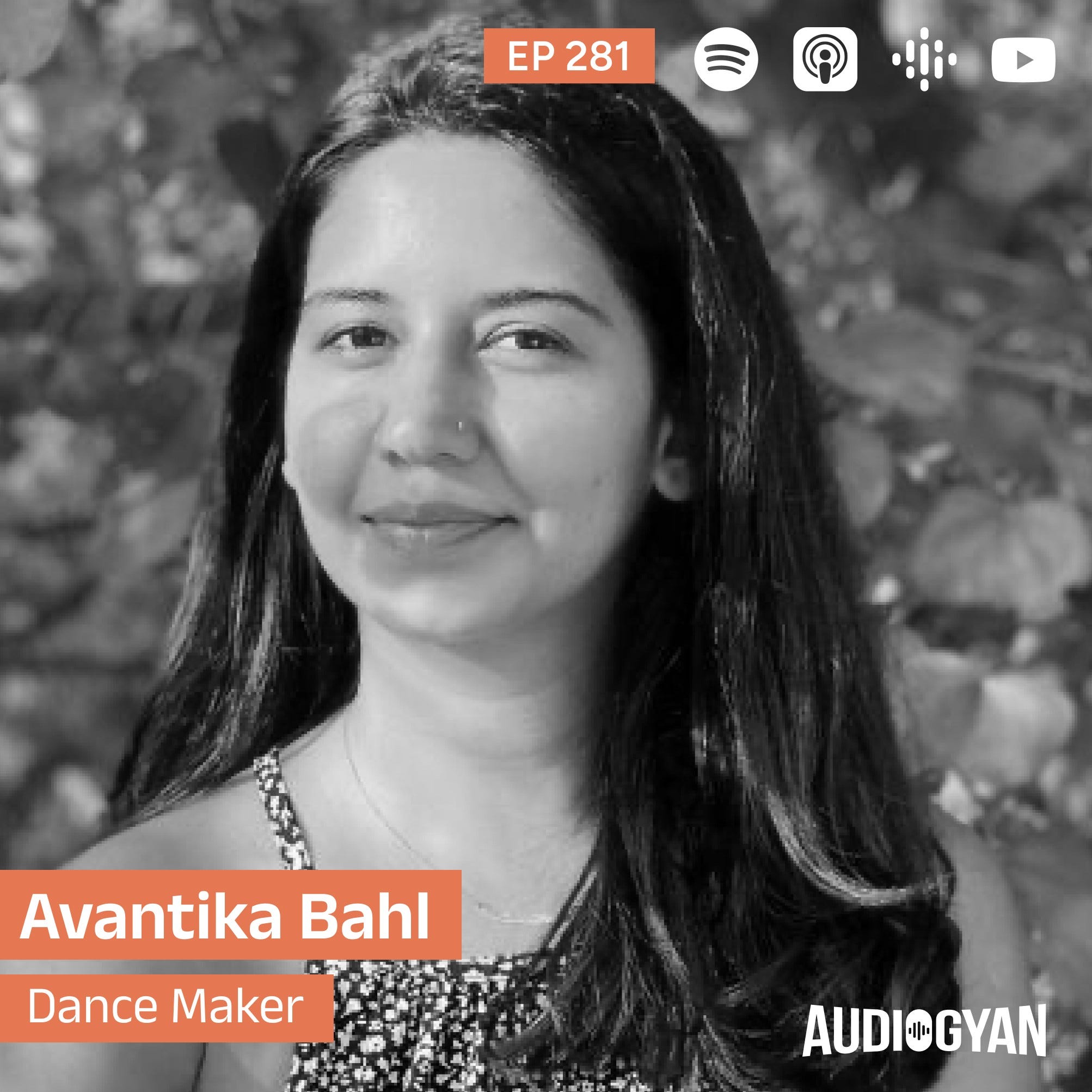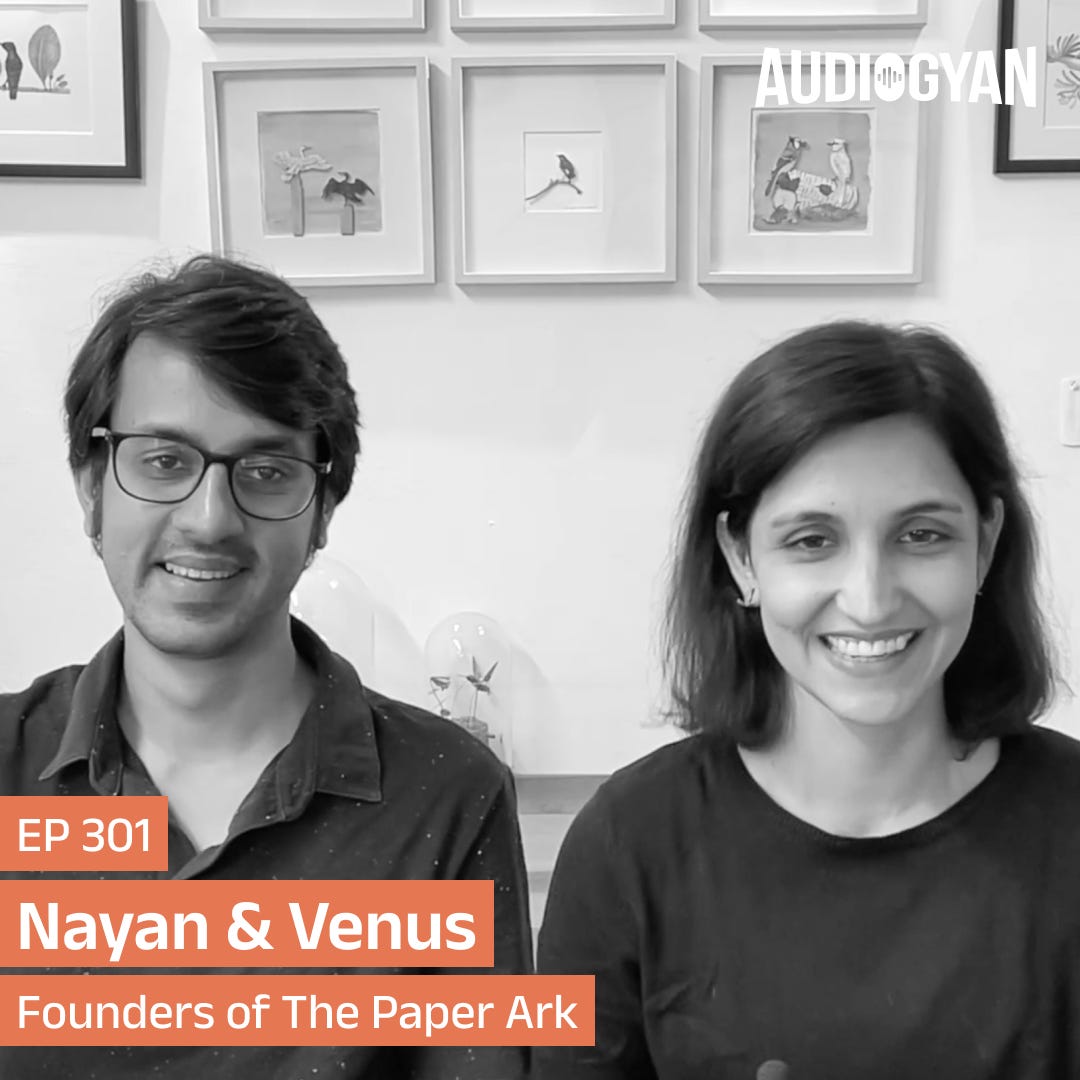Ep. 281 - Improvisation in dance with Avantika Bahl
Description
Friedrich Nietzsche’s famous line - “And those who were seen dancing were thought to be insane by those who could not hear the music.”
In today’s episode, we’ll be talking about improvisation in dance with Avantika Bahl. Avantika is a dance practitioner and educator based in Mumbai. As an artist, she works towards creating inclusive performances that can be accessed by a larger community. Over the past few years, her choreographic choices have brought diverse voices and experiences to the mainstream. She studied at the London Contemporary Dance School and completed the Curriculum-in-Motion program offered by Jacobs Pillow. Avantika has a Masters degree in English Literature and completed her Level 3 certification in Indian Sign language.
Questions
- What according to you is improvisation? Where do we see it mostly happening? Is it seen in all creative endeavours?
- You have dabbled with silence, mundane chores, sometimes with just burst of sounds. What do you call your form of dance? Which category / genre does it belong?
- What does it mean to improvise in the context of dance? What guides improvisation for you - Body, Music, Theme, Story, Location or anything else?
- Traditionally dance (or most performing art forms) were considered to be performed effortlessly (Sahaj) and elegantly (simple). Does one need to know the rules to bend the rules? What does bending a rule mean? Improvisation?
- Your show “Say, What?” with a creative partner who is deaf. What is the extent of improvisation that a dancer can explore and still make it palatable? What the biggest challenge in experiments like these? You said, “We just have to be still and dance” - What do you mean?
- Tell us about your experience learning the Indian Sign language. How did it help?
- When and why do dancers improvise? When we fail or when we do something over and over again? Is it the boredom? Is it uncovering deeper layers as they keep performing or revisiting the movements? Is it that the medium falls short to express?
- Can improvisation be a starting point? Do smaller improvisations impulses land in changing the meta narrative? How does one come back to the main kathavastu / main narrative? May be you can explain in the context of “Look left, turn right”?
- What is the extent of improvisation when it comes to dance? Can you share any examples - names and artists who are doing and have done a lot in the past?
- What according to you is the future of dance and improvisation?
Reference reading
- https://www.avantikabahl.com
- https://www.instagram.com/avantikabahl/?hl=en
- https://prakritifoundation.com/artiseprofile/avantikabahl/
- https://vimeo.com/user5724048
- https://www.themovementartsco.com/blank-page
- https://narthaki.com/info/rev17/rev2058.html
- https://theideaslab.com/say-duet-celebrating-sounds-silence-movement/
- https://en.wikipedia.org/wiki/Merce_Cunningham
- https://www.theguardian.com/stage/2006/sep/16/dance
- https://sites.northwestern.edu/cageanddance/jcchoreo/
- https://www.abt.org/people/john-cage/
- https://en.wikipedia.org/wiki/John_Cage
- https://studsterkel.wfmt.com/programs/merce-cunningham-and-john-cage-discuss-music-and-dance
- https://en.wikipedia.org/wiki/Ohad_Naharin
- https://www.dansedanse.ca/en/ohad-naharin
- https://www.gagapeople.com/en/
- https://www.nytimes.com/2023/03/02/arts/dance/review-ohad-naharin-hora-batsheva.html
- https://www.newyorker.com/culture/culture-desk/the-secret-history-of-the-israeli-choreographer-ohad-naharin
This is a public episode. If you would like to discuss this with other subscribers or get access to bonus episodes, visit www.audiogyan.com

























